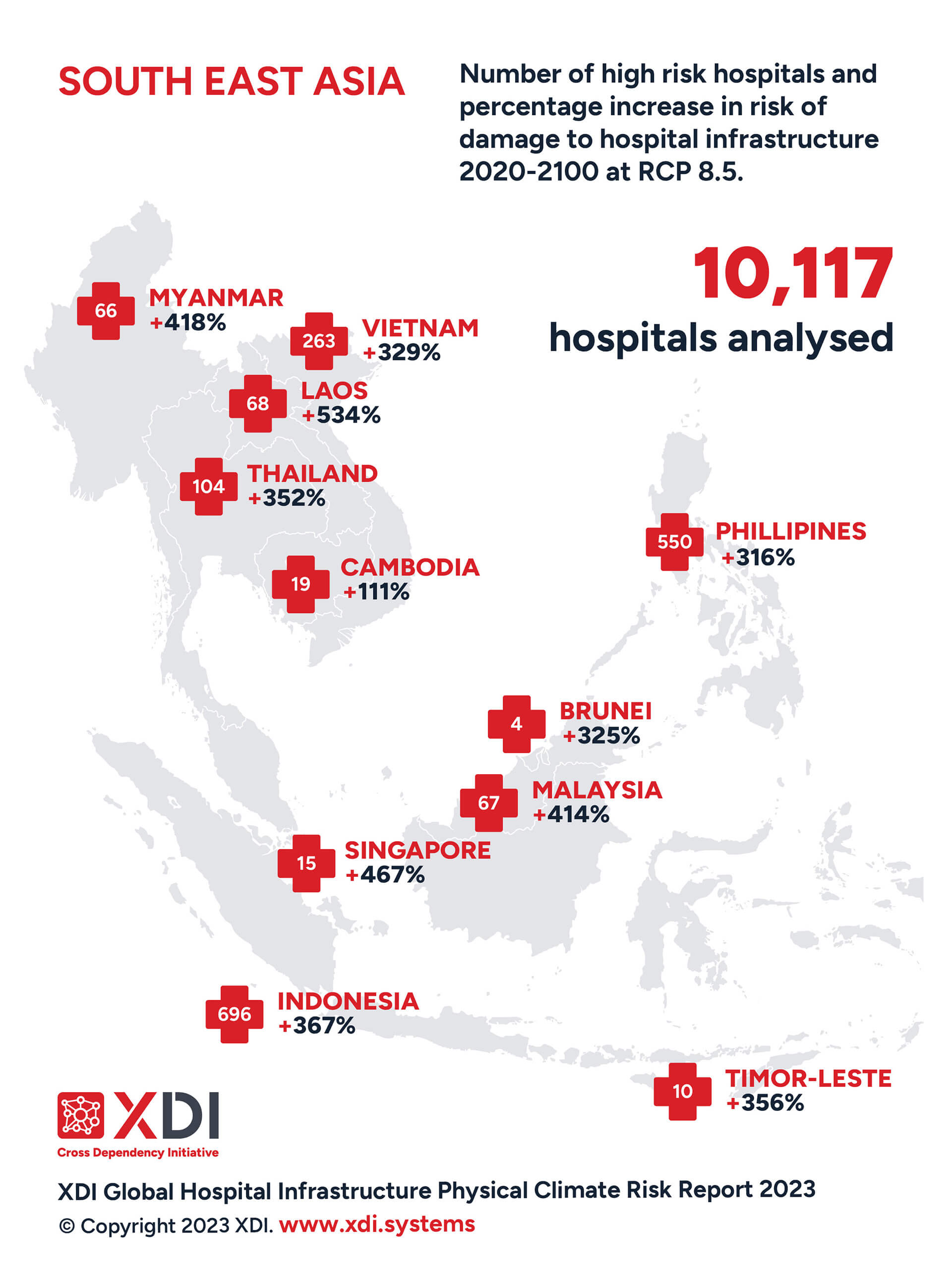2023 XDI Global Hospital Infrastructure Physical Climate Risk Report
Published on
December 3, 2023

Contact us
Get in touch with one of our friendly team
Sales
Get expert advice on the best solutions for your climate risk scenarios
From simple, low cost analysis, to complex, detailed and specific,
XDI delivers actionable results
Our vision is not just to identify physical climate risks, but to mitigate them.
XDI can help you develop business plans for adaptation, helping you move from risk to resilience.
Talk to us today to find out more.







